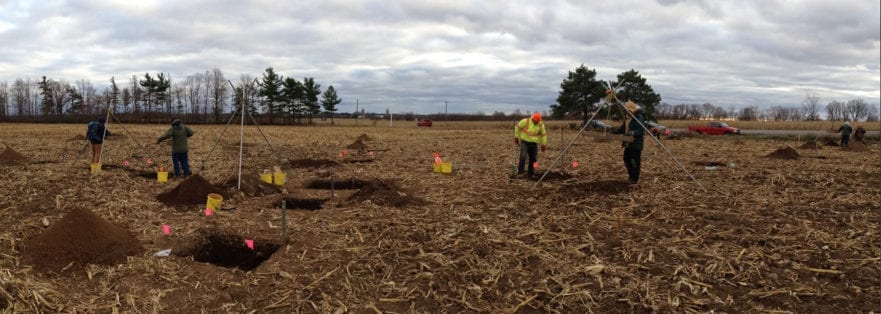With EPA regulations and local and state requirements to assess and repair below-ground hazards, using ground penetrating radar (GPR) for environmental remediation be a critical tool for finding and assessing the unseen. Since GPR is non-destructive, it can be used in a variety of inspection phases to determine whether there are hidden environmental hazards.
Whether it is a commercial development project, a restoration project, or a residential purchase, finding underground features at the outset can help manage costs and determine the value of a potential property purchase.
Commercial Underground Features
For commercial real estate, finding underground features is critically important. Certain EPA regulations may require that storage tanks, utility conduits, and other features be identified and cleaned up by a responsible party. GPR can locate landfills and the storage of contaminants that may have been left by prior owners. Some examples might include heating oil tanks, gasoline tanks, and other storage tanks that may have held potentially toxic materials. Getting an image of the underground tank can help determine not only the location of the tanks but also what might be found in the soil samples surround the tanks prior to unearthing them.
Residential Readings
For homeowners, using GPR to find heating oil tanks is an important use, especially in older homes. This can result in a big expense if the soil is contaminated around the tanks. Using GPR for locating underground utilities can also be helpful. If any construction is to be done on the property and prior uses are unknown, uprooting utility lines can be potentially very dangerous and result in spills or costly damage to utility cables.
Available GPR Technologies
Using GPR for environmental remediation generally takes the form of one of a variety of technologies. These may include impulse technology, stepped frequency, frequency-modulated continuous-wave and noise. In some cases, pipe or wall penetrating GPD might be used in order to determine additional details of the hazard. Using this type of technology requires an experienced contractor who can both assess the correct type of technology to use, as well as provide an accurate reading of the imaging that results from the analysis.
Hire an Experienced Professional
Using a GPR professional is critical, since readings will depend on the level of conductivity of the soil present at the site. The depth of a GPR reading will depend on the electrical conductivity of the ground at the site, the transmitted frequency, and the radiated power. Having dry materials, for example, means that the signal may penetrate farther than it would through clay or other moist materials. Rocky soil can also result in a limited reading. Dry materials including granite, limestone and concrete can allow signal to penetrate as much as 50 feet. For clay however, penetration of the signal could be limited to only a few inches.
Limitations
GPR interpretation is difficult for the inexperienced, and images may not be clear to the layperson. Finding the right contractor to handle the GPR readings will be dependent on the application, whether for environmental remediation or another application. Significant expertise is required to effectively design a GPR study, as well as conduct and interpret the results.
In addition, where an extensive field survey is needed, the technology may require significant energy consumption, which can add to the costs of a survey. to control these costs, a qualified surveyor can determine in advance the breadth and scope of the necessary survey. As already indicated, the type of soil will also contribute to the costs and effort required to conduct the survey.
GPR can successfully be used for environmental analysis for remediation purposes. To learn more about what ground-penetrating radar can do for your needs, contact Wood Inspection Services, Inc. We represent leaders in North Texas when it comes to using imaging technology to see underground.
You can contact us by using the form on our website or calling us at (972) 724-5550.

